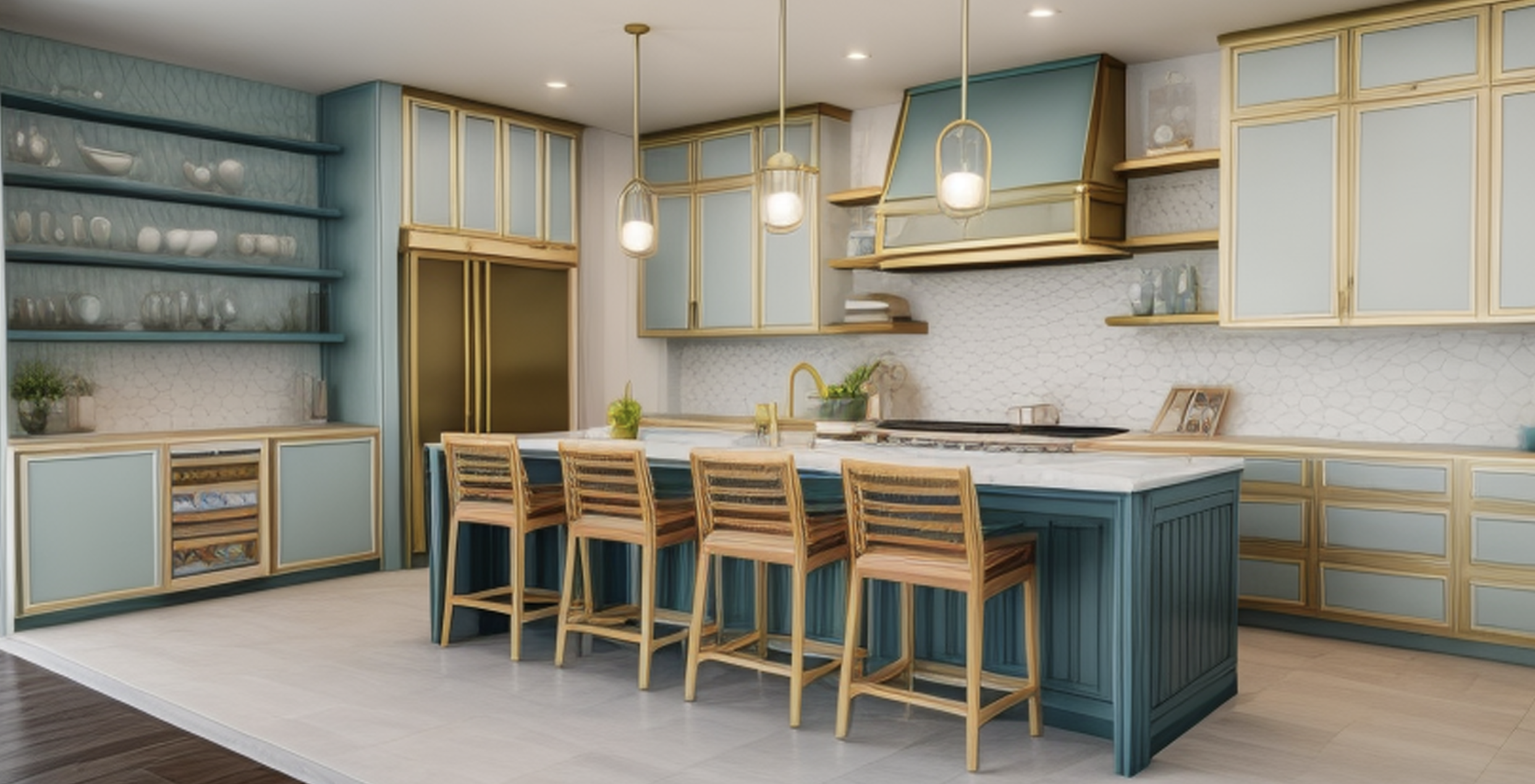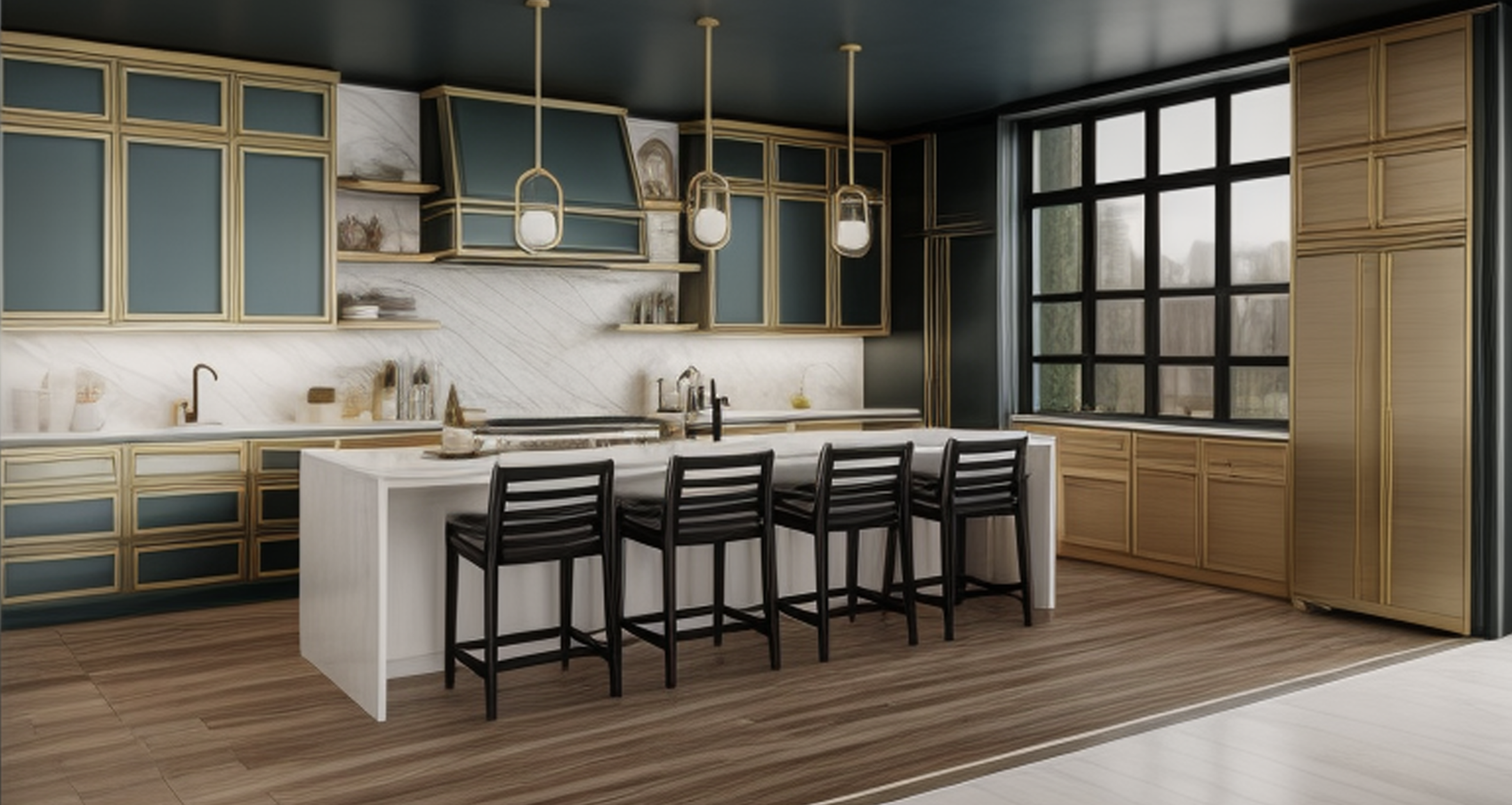The Pros and Cons of Utilizing AI Tools to enhance Interior Design 3D Renderings
3D renderings can be highly beneficial when communicating design choices and suggestions to our clients. They can also help both designers and clients to better visualize why certain design requests may not be efficient or practical. Alternatively, in the process of creating drawings and renderings, inspiration for new design solutions and innovations may come up for a designer. Technology that we use in our field has come a very long way, and I happily utilize these tools to forge a path of open and clear communication with my design clients and with my contract/project partners.
A newer technology trend for Interior Designers is Artificial Intelligence (AI). There are numerous extensions and plug ins that pair well with certain CAD software. The AI technology we use can provide photorealistic images by utilizing our base drawings as a starting point.
AI offers numerous benefits when it comes to generating photorealistic finishes in conjunction with original designer renderings. One of the key advantages is the significant time-saving aspect, as AI algorithms can efficiently analyze textures, shadows, and lighting to create stunning visual representations in a fraction of the time it would take a human artist. Additionally, AI can enhance the creative process by suggesting color palettes, design elements, and layout options based on extensive data analysis.
However, the use of AI in this context also raises controversy regarding the authenticity and originality of the artwork produced. Some argue that relying heavily on AI for creating photorealistic finishes may diminish the human touch and craftsmanship that define traditional designer renderings. As technology continues to evolve, balancing the benefits of AI efficiency with the artistic integrity of original designs and the value of your expert designer’s experience and education remains a relevant and ongoing discussion in the world of art and design.
While AI can assist with generating design ideas, there is a concern that it may limit the creative freedom of designers. Relying too heavily on AI-generated suggestions could result in a lack of originality and unique design solutions in interior spaces.
Additionally, integrating AI into the design process may require additional technical expertise and resources. Designers and firms may need to invest in training staff, updating software, and ensuring data security and privacy, which can be challenging and costly.
Artistic integrity should always be the core focus for interior designers, even as we embrace advancements in technology for our education and expertise. It is imperative to stay current with technological tools and trends to enhance our skills and creativity. However, originality in design should never be compromised in the pursuit of staying up to date. Designing spaces is an art form that revolves around each individual's unique environment and personal tastes, and it is crucial to craft each space as an original work of art. By balancing artistic integrity with the utilization of technology, interior designers can ensure that their creations are not only current but also deeply personal and creatively inspired.
The above image is an AI generated photorealistic finish based on an original 3D rendering by Claire Gorenflo
The above image is an AI generated photorealistic finish based on an original 3D rendering by Claire Gorenflo
The above image is an AI generated photorealistic finish based on an original 3D rendering by Claire Gorenflo
The above image is an AI generated photorealistic finish based on an original 3D rendering by Claire Gorenflo
The above image is an AI generated photorealistic finish based on an original 3D rendering by Claire Gorenflo
The above image is an AI generated photorealistic finish based on an original 3D rendering by Claire Gorenflo
Original Base 3D rendering for Powder Bath created by Claire Gorenflo








